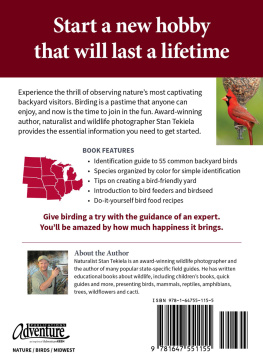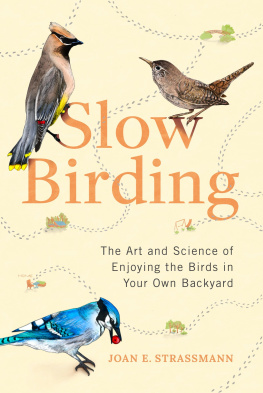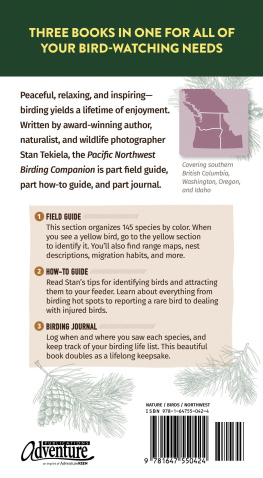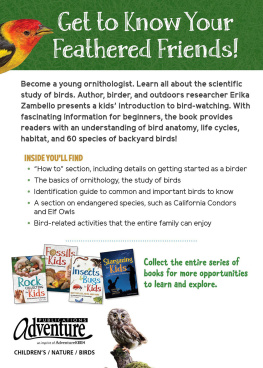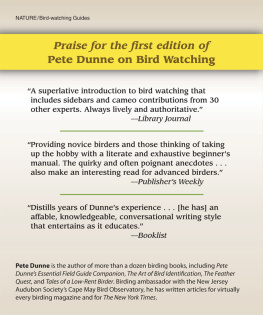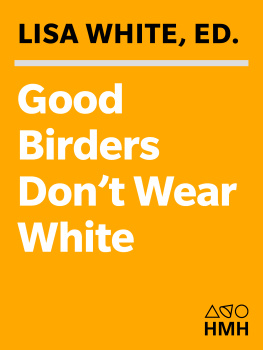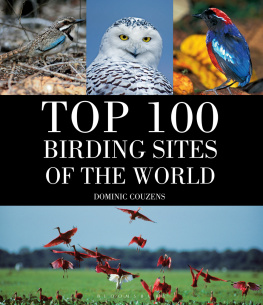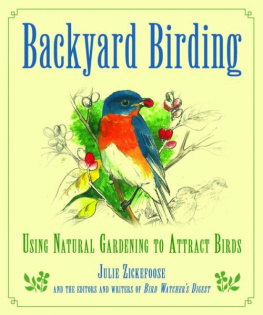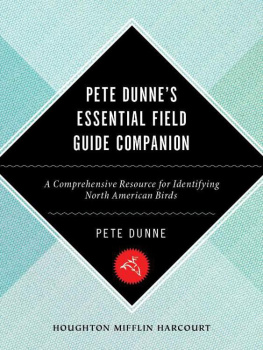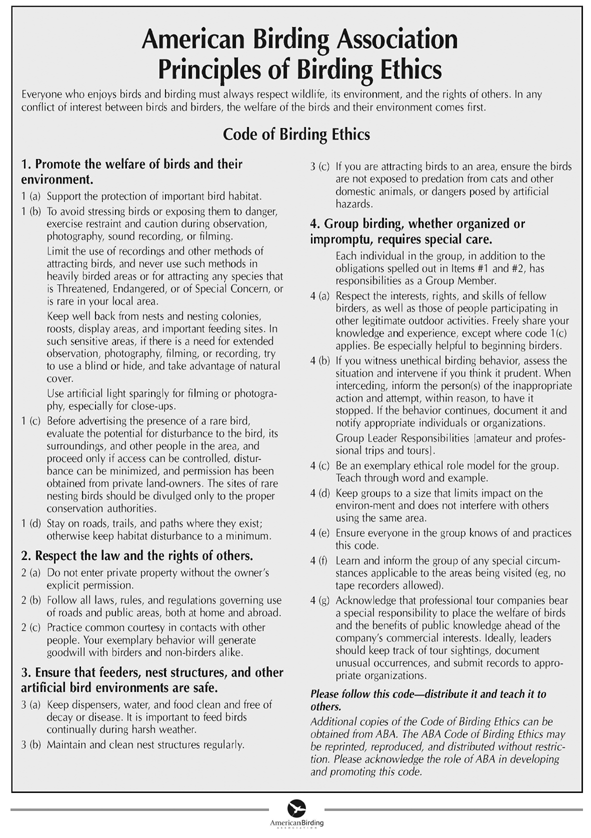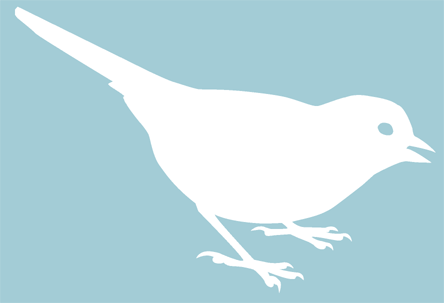ABOUT THE AUTHOR
Sheila Buff is a freelance writer specializing in both medicine and the outdoors. The author of Insiders Guide to the Hudson River Valley and several books about birding, she lives in Milan in northern Dutchess County, New York.
APPENDICES
APPENDIX A: AMERICAN BIRDING ASSOCIATION CODE OF BIRDING ETHICS
APPENDIX B: BIRDING ORGANIZATIONS
National Audubon Society
National Headquarters
225 Varick St., 7th floor
New York, NY 10014
(212) 979-3000
www.audubon.org
Public Policy Office
1150 Connecticut Ave., NW, suite 600
Washington, DC 20036
(202) 861-2242
www.audubon.org
National Science Office
545 Almshouse Rd.
Ivyland, PA 18974
(215) 355-9588
www.audubon.org
State offices and local chapters of the National Audubon Society are listed on the Web site at audubon.org.
INDEPENDENT AUDUBON SOCIETIES
Audubon Naturalist Society of the Central Atlantic States
Woodend Sanctuary
8940 Jones Mill Rd.
Chevy Chase, MD 20815
(301) 652-9188
www.audubonnaturalist.org
Connecticut Audubon Society
2325 Burr St.
Fairfield, CT 06924
(203) 259-6305
www.ctaudubon.org
Hawaii Audubon Society
850 Richards St., suite 505
Honolulu, HI 96813
(808) 528-1432
www.hawaiiaudubon.com
Illinois Audubon Society
2315 Clear Lake Ave.
Springfield, IL 62708
(217) 544-2473
www.illinoisaudubon.org
Indiana Audubon Society
Mary Gray Bird Sanctuary
3499 South Bird Sanctuary Rd.
Connersville, IN 47331
(765) 827-5109
www.indianaaudubon.org
Maine Audubon Society
20 Gilsland Farm Rd.
Falmouth, ME 04105
(207) 781-2330
www.maineaudubon.org
Massachusetts Audubon society
208 South Great Rd.
Lincoln, MA 01773
(781) 259-9500
www.massaudubon.org
Michigan Audubon Society
6011 West St. Joseph, suite 403
Lansing, MI 48917
(517) 886-9144
www.michiganaudubon.org
Audubon Society of New Hampshire
84 Silk Farm Rd.
Concord, NH 03301
(603) 224-9909
www.newhampshireaudubon.org
New Jersey Audubon Society
9 Hardscrabble Rd.
Bernardsville, NY 07924
(908) 204-8998
www.njaudubon.org
Audubon Society of Rhode Island
12 Sanderson Rd.
Smithfield, RI 02917
(401) 949-5454
www.asri.org
OTHER ORGANIZATIONS
American Birding Association
4945 North 30th St., suite 200
Colorado Springs, CO 80919
(800) 850-2473
www.aba.org
Cornell Laboratory of Ornithology
159 Sapsucker Woods Rd.
Ithaca, NY 14850
(800) 843-2473
www.birds.cornell.edu
APPENDIX C: PERIODICALS FOR BIRDERS
The Auk
(505) 326-1579
www.aou.org
Birds & Blooms
5400 South 60th Street
Greendale, WI 53129
(800) 344-6913
www.birdsandblooms.com
Birders World
Box 1612
Waukesha, WI 53187
(262) 796-8776
www.birdersworld.com
Birding
American Birding Association
4945 North 30th St., suite 200
Colorado Springs, CO 80919
(800) 850-2473
www.aba.org
BirdWatchers Digest
Box 110
Marietta, OH 45750
(800) 879-2473
www.birdwatchersdigest.com
Living Bird
Cornell Laboratory of Ornithology
159 Sapsucker Woods Rd.
Ithaca, NY 14850
(800) 843-2473
www.birds.cornell.edu
North American Birds
American Birding Association
4945 North 30th St., suite 200
Colorado Springs, CO 80919
(800) 850-2473
www.aba.org
WildBird
Box 57900
Los Angeles, CA 90057
(213) 385-2222
www.wildbirdmagazine.com
The Wilson Journal of Ornithology
Wilson Ornithological Society
www.wilsonsociety.org
FINDING AND WATCHING BIRDS
The most important requirement for becoming a proficient birdwatcher is something you have already: enthusiasm for the natural world. All you need to do is take that enthusiasm, grab your binoculars, step outdoors, and start looking.
BIRDS ALL AROUND
As you get started in birdwatching, you may come to the startling realization that you have always been surrounded by birds and never really knew it. The simplest way to find birds to watch is to look in your own backyard. In a typical urban or suburban yard (or park or other open area), you will routinely see several obvious and easily identified common species, including House (English) Sparrows, Rock Doves (pigeons), starlings, robins, Blue Jays, and perhaps a few more.
If you put up a birdfeeder or a birdbath, you will attract more and different birds to observe. But doesnt that mean that the birds were there all along? Yesyou simply werent looking for them. Now that you know theyre there, practice your birding techniques on them.
One really satisfying aspect of birdwatching is that the more you watch, the more you see. The more often and more carefully you look at the familiar birds in your backyard, the better you will get to know them and how they behave. You may learn even to recognize individual birds among several of the same species. You will also start to see additional species because you have learned to differentiate among similar birds. For example, the small, brownish birds that you previously lumped together as just sparrows will resolve themselves into distinct species. And when a slightly different sparrow-like bird turns up, you will realize that it is a new bird for you, and you will be able to pin down its identity. Most amazing of all, new birds will seem to occur more often because you have begun to look more carefully at all the birds you see.

The American Robin, with its orange-red breast and erect posture, is one of the most familiar of birds, often seen on suburban lawns. It is so familiar, in fact, that it is frequently used as a reference birdother birds are compared with it in terms of size or song. The typical robin stands about 10 inches tall.
The most common birds are also the most important to know really well because they are often the benchmarks for descriptions and comparisons. Birds are often described as being about the size of a sparrow, robin, crow, or other common bird, for example. The better you know the common birds, the better you will be able to identify related birds and the better you will understand the differences among birds. The same behavior patterns you see in backyard birds can be seen, with minor variations, in birds anywhere. After you learn to recognize aggressive behavior in a Tufted Titmouse at your feeder, for example, you will probably be able to recognize that behavior in other birds in different feeding situations.
HABITAT AND NICHE
Moving beyond your immediate neighborhood, where are the birds? Try looking in any open area with vegetation, especially one with water: fields, vacant lots, parks, wooded areas, stream-beds, and fields near airports. Even if you live in an urban area, theres bound to be some open space around you. Central Park, in the heart of densely urban Manhattan, is an oasis for birds. More than 250 species have been sighted there, while more than 300 species have been seen at Jamaica Bay Wildlife Refuge, quite literally in the shadow of Kennedy International Airport. Today, due to recovery efforts over the past few decades, Peregrine Falcons feed on complacent pigeons and nest successfully on skyscrapers, bridge towers, power plant smokestacks, and similar artificial cliffs in many urban locations, including the Brooklyn Bridge.



